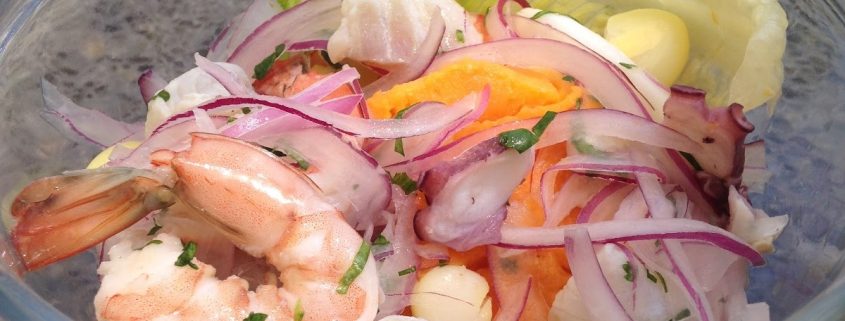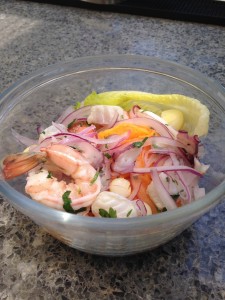Everyday Ceviche
It’s National Ceviche Day! What better time to celebrate the existence of a refreshing and flavorful dish than in the heat of late June?
Ceviche, also spelled seviche, is a South American staple that is sure to be a crowd pleaser this summer. With so many different varieties and array of bold flavors, it’s truly hard to find a ceviche that you won’t like. As you learn a little bit more about the unique characteristics in this dish, you might just find the perfect idea for your Sunday night dinner.
The origins of ceviche are unclear, however, many appropriate ceviche to the Inca empire, located somewhere between Ecuador and Peru. These coastal countries had easy access to an abundance of fresh fish and often threw them together calling it “cebiche” which directly translates to “fish stew.” In the late 1500’s, when the Spanish empire invaded the region, Mediterranean flavors like lime and onion were introduced to the dish and thus, the traditional ceviche was born.
No Cliché Ceviche
The average ceviche entree is typically prepared with red snapper. But don’t let that limit you. Shrimp, scallops, squid, lobster and tuna are all acceptable substitutes that chefs often use to spice it up. These fish may even be mixed together to allow a blend of textures. The softness of scallops compliment the chewiness of lobster, tied together by the butteriness of tuna. When selecting your fish, it is critically important to select only the freshest ingredients since the plate will be served raw. Be wary of serving low grade, uncooked seafood to avoid giving your guests and yourself a foodborne illness.
Ceviche the Easy Way
The beauty about ceviche is it’s effortless preparation. Once you have your seafood washed and chopped, simply add your citrus juices and let the acid do the cooking. Citric acids cause the proteins in seafood to become denatured which gives it a cooked appearance. Feel free to add peppers, onions, jicama, ginger, and/or cilantro to your marinade to add an extra kick. In many cultural dishes and authentic restaurants, garnishes are an essential part of the presentation. Traditional toppings can range from potatoes to lettuce to Spanish corn. In most cases, salted, toasted corn nuts add just enough texture and spice to pull your dish together. Or you can add a Caribbean twist with dried plantain chips.
Ceviche is special because it “focuses on the virtue of freshness”. It has the same health conscious appeal as Japanese cuisine: high quality, simple ingredients with a ton of flavor. Raw fish contains a multitude of health benefits like high levels of omega-3 fatty acids as well as a good source of protein. And don’t forget, it’s loaded with vitamins and minerals like calcium and vitamin D. For a refreshing dish this summer, why not try ceviche.
Your turn to take action: Have you ever tried ceviche? Did you like it? Share your experience below.



Leave a Reply
Want to join the discussion?Feel free to contribute!